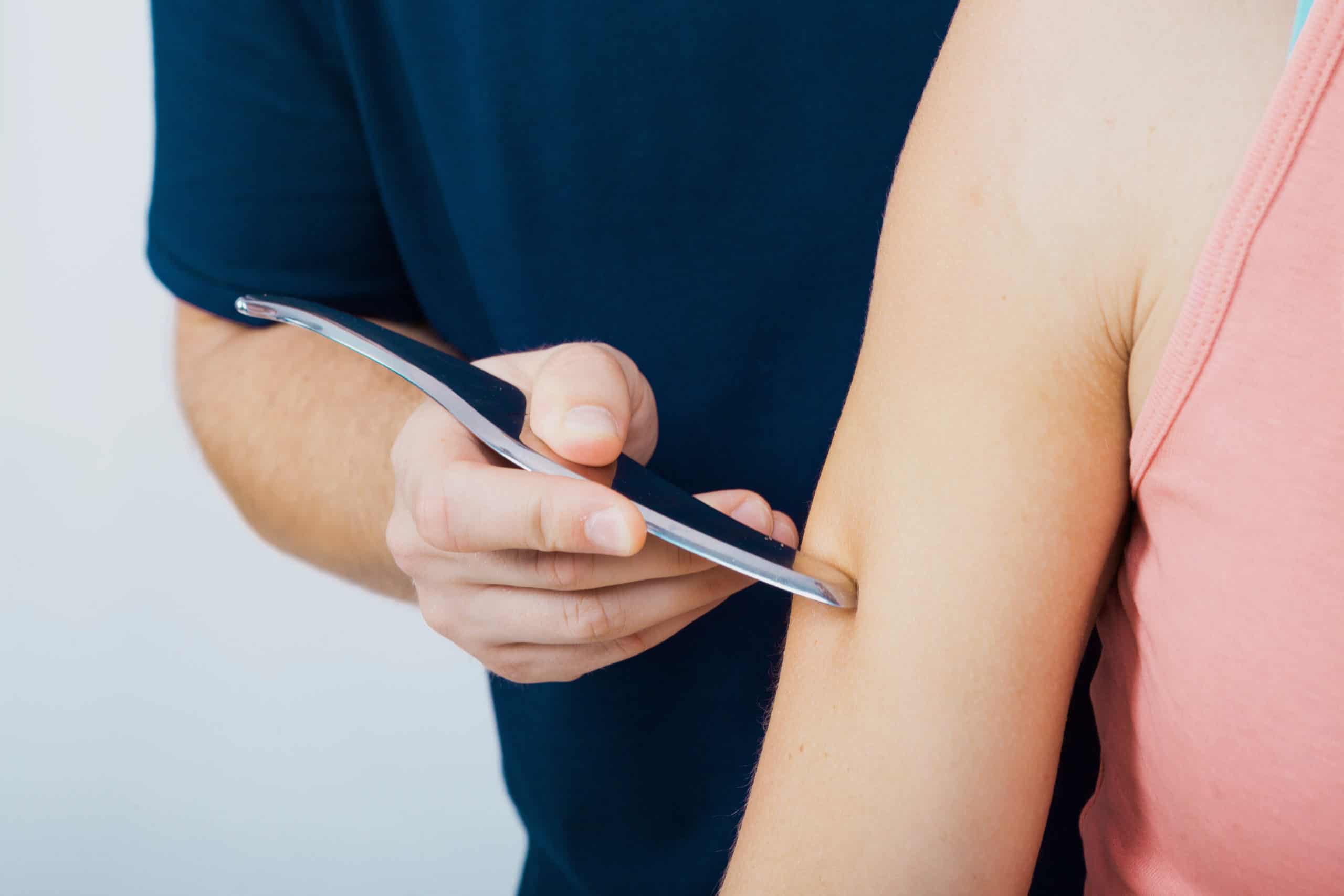- Home /
- Treatments /
- Graston Technique /
Graston Technique
Car accidents and certain medical conditions can leave an individual in pain and with a reduced range of motion. The Graston Technique may benefit patients experiencing a wide array of chronic and acute orthopedic issues, reducing pain and edema and increasing their range of motion so they can enjoy better mobility and quality of life. This article provides an overview of the Graston Technique and its uses as well as what patients can expect during and after treatment.


The Graston Technique, which has been in use since 1994, is a type of manual therapy known as instrument-assisted soft tissue mobilization, or IASTM. During IASTM, a clinician uses specialized tools to apply direct compressive strokes to injured tissue, manipulating a patient’s muscles, tendons, skin and myofascia.
Practitioners who use the Graston Technique use six specially designed instruments with unique edges. These handheld stainless steel tools vary in size and shape and may have concave or convex edges to accommodate different parts of the body. During treatment, the practitioner chooses the appropriate instrument and uses it to deliver a cross-friction massage that reintroduces trauma to the injured area, promoting healing. The procedure is typically used to detect and treat injured fibrotic tissue.
Sometimes referred to as GT therapy, the Graston Technique may be used by the following types of practitioners:
- Chiropractors
- Athletic trainers
- Osteopathic physicians
- Occupational and physical therapists
- Licensed massage therapists
All Graston practitioners undergo specialized training, including condition-specific instruction. Tools required to perform the therapy are only available to clinicians who’ve completed the coursework and received a license to practice the technique. Many sports organizations use this technique to care for their athletes. Northeast Spine and Sports Medicine proudly offers the Graston Technique in NJ.
Benefits of Graston Technique
The Graston Technique may be used to treat a wide range of soft tissue conditions and injuries, and patients may experience the following potential benefits:
Quicker healing time
Elimination or reduction of pain
Reduced edema and inflammation
Destruction of scar tissue
Increased range of motion and functionality
Are you a good candidate for Graston Technique?
-
Positive
You are an active athlete suffering from pain or muscle soreness.
-
Positive
You suffer from widespread pain due to a condition like fibromyalgia.
-
Negative
You have chronic high blood pressure.
-
Negative
You have an unhealed, complicated fracture at the site of your pain.
Frequently asked questions
How Does the Graston Technique Work?
The Graston Technique uses a cross-friction massage to gently reintroduce trauma to injured soft tissue to promote healing. During the procedure, the clinician massages the injured area using tools with smooth convex and concave edges, always going against the scar tissue’s grain. Therapy may cause temporary inflammation of the affected area, which increases blood flow and helps initiate healing in the injured soft tissue.

How Long Does the Graston Technique Take?
Depending on the injury being treated, Graston treatments may require one to 10 visits, which are usually spread out over four to five weeks. The therapy typically takes about 30 to 60 seconds for each area being treated, and some patients claim to experience results in as few as three or four sessions.

What Are the Potential Side Effects of the Graston Treatment?
Because GT therapy is a noninvasive technique, it has a minimal risk of side effects. Localized swelling and bruising may occur, and patients may find the affected area sore to the touch. Some individuals develop small red dots in the treated area, which are known as petechiae. These side effects are temporary, and patients may apply ice for 15-minute intervals to reduce any discomfort.
The Graston Technique shouldn’t be used on unhealed fractures or areas where there are open wounds and may not be ideal for patients with high blood pressure or certain types of cancers. To minimize the risk of complications, patients should discuss any underlying conditions with their physicians prior to receiving treatment.

What Does Recovery after the Graston Technique Look Like?
Patients who receive GT therapy typically require minimal recovery time. Once the practitioner completes the treatment, the patient may be asked to perform light stretches or strengthening exercises that involve low resistance and high repetitions. The clinician may also apply a cold pack to the affected area to decrease swelling and post-treatment pain. Patients may return home once the therapy is complete.
Patients who are seeking a nonsurgical way to treat acute, or chronic pain may benefit from the Graston Technique. To arrange a consultation with one of Northeast Spine and Sports Medicine’s pain management specialists, book an appointment today at one of Northeast’s many convenient locations.

What Is Graston Therapy Used For?
The Graston Technique is generally used to treat soft tissue injuries and conditions and may be integrated into a patient’s rehabilitation program. The procedure may be used on most areas of the body, but patients with the following common conditions may be good candidates for GT therapy:
- Edema
- Fibromyalgia
- IT band
- Shin splints
- Trigger finger
- Plantar fasciitis
- Hamstring injuries
- Patellofemoral disorders
- Carpal tunnel syndrome
- Tennis and golfer’s elbow
- Lumbar or cervical sprains and strains
- Chronic back, neck, shoulder or hip pain
- Scarring due to a mastectomy or caesarean section
The Graston Technique is often used on patients who’ve been injured as a result of a car accident or who are recovering from a slip-and-fall accident.

